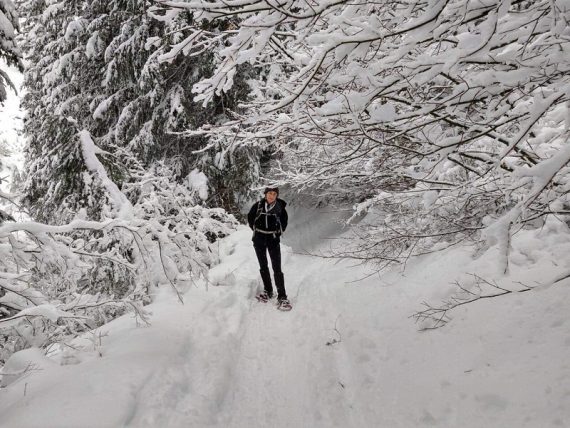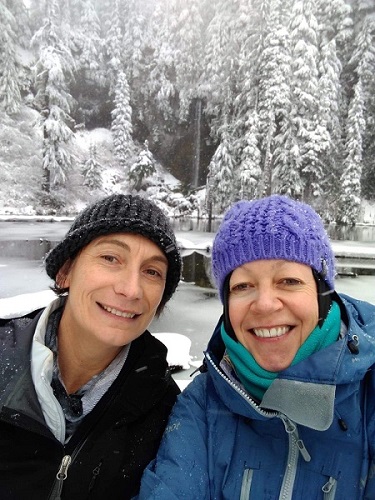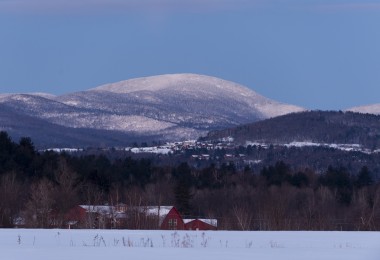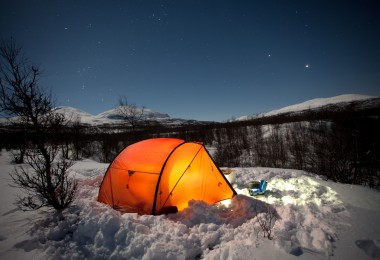When it comes to snowshoeing in Washington State, most of the attention and attraction centers on the Mount Rainier area, and for a good reason. Mount Rainier offers plenty of natural attractions and is easily accessible for the thousands who live along the Interstate 5 corridor in and around Seattle. However, by just visiting Mt. Rainier, you may be missing out on another exceptional snowshoeing opportunity to the south: Mt St Helens.
On Mt St Helens, the annual snowpack on the upper slopes can reach 16 feet (487 cm). Additionally, this winter playground sees far fewer visitors, and the snowshoeing is as peaceful as it gets.
Snowshoeing June Lake on Mt St Helens
Located in Mount St. Helens National Volcanic Monument in Gifford Pinchot National Forest, June Lake trailhead is easy to reach. It is located 140 miles (225 km) from Seattle, and just 25 miles (40 km) from Portland. From Interstate 5, take exit 21 on to Route 503 east toward the town of Cougar. After 35 miles (56 km), turn left on Forest Service Road 83 and drive six miles (9.7 km) to the trailhead on the left at Marble Mountain Sno-Park.
A $10 Northwest Forest Pass is required to park at the trailhead. Displaying your annual “America the Beautiful” national parks pass is another option.
A Great Day Trip To June Lake
Offering their first-hand experience visiting June Lake are two avid snowshoers from Olympia – the Washington State capital 60 miles south of Seattle. Janet Grimwade and Susan Woodward explored Mount St. Helens earlier this year. Driving less than three hours from their home base in Olympia, Janet and Susan strapped on their snowshoes after parking at the Marble Mountain Sno-Park. “We did a little research and thought that the June Lake area of St. Helens would be a good day trip,” says Janet. “We opted for a loop instead of an in and out trail.”
Though slightly challenging, snowshoeing to June Lake is a 5-mile (8 km) round trip from Marble Mountain Sno-Park. Hiking time is roughly three hours, while the elevation gain is 500 feet (152 m). The highest point you will reach is 3,100 feet (945 m).
With well-marked trails, June Lake offers several options for snowshoers. “If you’re in relatively good shape, this is an easy trail to snowshoe, and the ‘wow’ factor at the end is well worth the effort,” says Janet. The picturesque cascading 40-foot [12 m] waterfall near the lake is an incredible sight.”
Along the trail heading to the lake are a few incredible vantage points. While snowshoeing up a short steep incline, the trail subtly reveals the mountain in a peek-a-boo fashion between the evergreen trees. “Before you reach the lake, you come out of the trees, and the mountain opens up before you, in all its splendor; simply an incredible sight,” reflects Janet.
Many visitors like to linger here and have lunch. A note of caution: Be aware that there are brazen birds in this area who think that your lunch is their lunch! They might try joining you with or without your permission!
Read More: Seattle, Washington: Top 5 Day Trips For Snowshoe Beginners
Other Mount St. Helens Snowshoe Options
In addition to June Lake, a few popular snowshoe areas to the summit and within Mount St. Helens include Worm Flows, Chocolate Falls, and Coldwater Lake.
Worm Flows
The most direct route to ascend Mt St Helens summit in winter is via the Worm Flows, an undulating series of lava flows created over thousands of years. Starting from the Marble Mountain Sno-Park, this snowshoe hike will gain 5,700 feet (1737 m) of elevation by the time you reach the summit. Add a couple of feet of snow, and you have picturesque mounds that feature breathtaking views of the surrounding area. If you embark on this 12-mile (19 km) trip, come prepared with an ice ax, crampons, and avalanche awareness, and of course, snowshoes. You will also need to obtain a winter climbing permit.
Chocolate Falls
At about 2 miles (3.2 km) into the Worm Flows hike, you will gradually leave the forest and be rewarded with views of Chocolate Falls, a 40-foot (12 m) waterfall along Swift Creek. As you continue past the falls and near the summit of Mt. St. Helens, hope for good weather. On a clear day, you can see in the distance both Mount Adams and Mount Hood.
Pine Marten Trail
As an alternative, pick up Pine Marten Trail No. 245D from the Marble Mountain Sno-Park. The trail ends in roughly two miles (3.2 km), where you’ll find a kiosk/message board with a map and several other trail options.
Middle Sasquatch Trail
Many snowshoers also enjoy the Middle Sasquatch Trail, No. 236A, across the base of the Worm Flows. This 3.5-mile (5.6 km) loop takes you through gentle elevation changes alternating between meadows and forests.
Coldwater Lake Loop
Eight miles (12.9 km) north of Mount St. Helens, a popular snowshoeing route is the Coldwater Lake Loop. While snowshoeing this 10-mile (16 km) loop, the mountain comes in and out of view on numerous occasions, which is augmented by beautiful scenery and occasional wildlife sightings. Coldwater Lake was formed as a result of the 1980 eruption of Mount St. Helens.
Read More: Washington’s Hurricane Ridge Offers Plenty of Snowshoeing in Olympic National Park
History of St. Helens
Though snowshoeing Mt St Helens today is a serene experience, the mountain had other ideas several decades ago. Many may recall the devastation inflicted on the region nearly 40 years ago when this active volcano in the Cascade Mountain Range erupted on May 18, 1980.
For nine consecutive hours, prevailing winds sent 520 million tons of ash across the state. Official records show that the eruption killed 57 people, nearly 7,000 big game animals (deer, elk, and bear), and an estimated 12 million fish from a nearby hatchery. More than 200 homes were destroyed or extensively damaged, along with 185 miles (298 km) of the highway, and 15 miles (24 km) of railways.
Before the blast, Mount St. Helens stretched skyward to 9,677 feet (2950 m). But after the eruption, it measured 8,363 feet (2509 m), according to the U.S. Geological Survey. Thus, a permanent reminder of the explosion is the picturesque horseshoe-shaped crater opening to the north. As noted above, if you’re up for it, you can actually snowshoe to the summit, all 8,363 feet (2509 m) of it!
The Morning The Mountain Blew
As a journalism student at Washington State University in Pullman, Washington, during the spring of 1980, I recall vividly the morning of May 18, 1980 – the day Mount St. Helens erupted. I was peacefully reading the Sunday edition of the Spokane Spokesman-Review on a warm, sunny, and blue sky morning. At exactly 8:32 a.m., I felt the windows in my apartment rattle. I dismissed it, thinking that a neighbor slammed the door or dropped something. An hour later, my blurry-eyed roommate, Marty, returned from an all-nighter, and nonchalantly announced, “Did you hear?”
“Hear what?” I asked.
“The mountain finally blew.”
I turned on the TV looking for updates, but nothing more than speculation was reported. It wasn’t until about 1 p.m. that I truly noticed the ramifications of the blast some 300 miles to the west. Though it was 80 degrees and a cloudless blue sky earlier that morning in Pullman, by one o’clock, it was pitch black, and the birds began chirping!
I donned a makeshift mask and headed to the Daily Evergreen newsroom, where I met up with a few colleagues. I vaguely recall making phone calls to various sources as we eventually published a special edition of the paper. But the most vivid memory from those first hours of tromping around the campus through 3-4 inches of gray ash – I kept thinking: I wish I were wearing my snowshoes!”











Leave a Comment